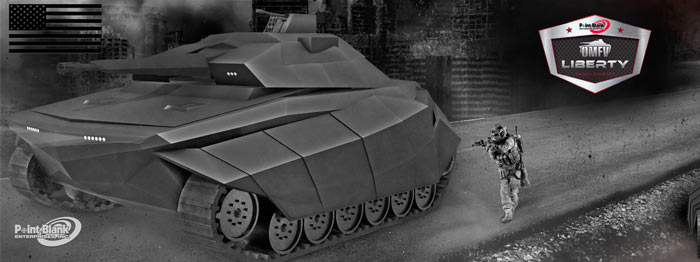

Keshik Mobile Power Systems is named for elite Mongol warriors. The Mongols revolutionized mobile warfare and tactics and in a mere 25 years carved out the largest contiguous land empire ever achieved.
Keshik Mobile Power Systems seeks to equip the US Military with the capacity to fight at a relentless pace, simplify logistics, power the force, and adapt to all the challenges of the modern, multi-domain battlefield.
MISSION
ANY SOLDIER CAN PLUG ANY PIECE OF EQUIPMENT INTO ANY POWER SOURCE AT ANY TIME.
In today's Army, that statement is a warning. A dangerous reality that the Army tries to mitigate through training, procedures, and interlocks. And when the safety measures are insufficient the resulting electrical accidents can be very expensive and sometimes tragic.
If the Army is to truly "be mobile and maneuver dispersed" as laid out in TRADOC Pamphlet 525-3-6, that statement must become a factual assessment of operational capability. Dispersed units cannot count on specialized personnel or dedicated equipment that may be far away with other elements of the unit and must have the flexibility to make do with whatever is close at hand. Mobile units cannot afford the time for lengthy safety procedures, or to wait until all the pieces required for a standard configuration arrive.
CAPABILITIES
Keshik Mobile Power Systems will provide the Army a truly modular plug-and-play open-architecture power system that delivers this essential operational capability.
ANY SOLDIER
No more need for the extensive specialized training needed to safely work with today's AC and DC electrical
power systems. No more difficult than plugging in your electric car.
ANY EQUIPMENT
Cell phones. HVAC systems. Traction drives. Batteries. Directed energy weapons. Ancient equipment and things
not invented yet. Low power loads requiring high levels of personnel safety, high power loads with a premium
on efficiency, and medium power loads with mixed priorities.
ANY POWER SOURCE
No more need to synchronize generators, coordinate circuit breaker trips, calculate fault current levels,
filter harmonics, or analyze resonances. Different battery technologies can be used side by side. Engine
generators along with fuel cells.
ANY TIME
Cables can be plugged and unplugged while equipment is operating without risk to the soldier. No interruption
of operation to add or remove equipment.
NEWS

The Army's attempt to progress from its more traditional approach to contract awards is now allowing for it to be more inclusive in order to develop capabilities that will be more scalable in the future. In its attempt to build a replacement for the Bradley Fighting Vehicle, competition is open for the Optionally Manned Fighting Vehicle (OMFV). Now Point Blank Enterprises (PBE) is working with Keshik Mobile Power Systems to form a team of defense companies and small businesses for this program.
When PBE announced in April it would try for the OMFV, Keshik's CEO, James Blackburn, said in a statement that the company planned to build "a transformational fighting vehicle platform that leverages robust mobility and agility through a distributed redundant hybrid electric drive train, best-in-class survivability, unprecedented exportable electric power, and scalability for maturing cross domain operational flexibility in real time."
Read the full article at: https://breakingdefense.com/2021/07/omfv-awards-mark-broad-shift-in-army-acquisition/

Point Blank Enterprises is the most recent nontraditional business to come out of the woodwork as a competitor for the U.S. Army's concept vehicle design phase to replace the Bradley Infantry Fighting Vehicle.
The company announced April 26 on its website that it had submitted a bid. The announcement comes almost two weeks after the Army's deadline for solicitations.
While other small businesses and nontraditional companies are believed to have bid on the Optionally Manned Fighting Vehicle, or OMFV, program, the only other company out in the open as a bidder is Michigan-based Mettle Ops. Defense News first reported its participation.
Read the full article at: https://www.defensenews.com/land/2021/04/28/point-blank-throws-hat-in-ring-to-design-us-armys-bradley-replacement/
CONTACT US
WHO WE ARE
Keshik Mobile Power Systems was born of an idea to revolutionize the Army's approach to creating, using and delivering electrical power, housed in a modular fighting platform. It originated in the form a vehicle that sought to leverage modularity, redundancy, simplicity, and unparalleled levels of exportable electricity. It began nearly a decade ago with Patrick Maloney and was refined over time by a small, but continuously growing team of veterans and technical experts.
In 2018, the Army canceled the first phase of the OMFV project and reached out to industry to try to rectify the consistent failure to replace the Bradley. The Keshik team, which had not participated in phase 1, saw the opportunity to open a dialog with the Army and hopefully influence the requirements to be open enough to allow a small team with a good idea to get into the arena. The Army's Request for Proposal did, in fact, create the opportunity for Keshik to enter the arena. Keshik approached Point Blank Enterprises who saw the opportunity and teamed with Keshik to win one of the five OMFV Contracts.
Leveraging MOSA and MBSE from the beginning, the Point Blank/Keshik team is using a diversity of expert subcontractors to create a bottom-up vehicle build. The team is focused and agile and ready to disrupt the traditional approach to acquisition and Army operations.
© 2021 Keshik Mobile Power Systems, Inc.